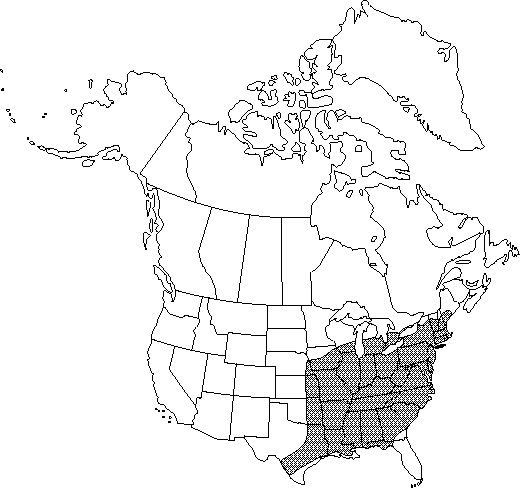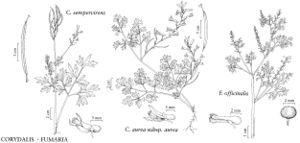Fumaria officinalis
Sp. Pl. 2: 700. 1753.
Plants 1-7 dm. Inflorescences, excluding peduncle, 3-7 cm; bracteoles 1/2 to nearly as long as pedicels. Flowers: pedicel straight and ascending in fruit, ca. 3 mm; corolla 6-9.5 mm, spur ca. 2.5 mm; petals purplish pink or white near base, deep reddish purple to maroon apically. Capsules subglobose, sometimes slightly depressed, 1.5-2 mm diam., ± warty or pebbled. 2n = 32, 48.
Phenology: Flowering spring.
Habitat: Waste places, cultivated or fallow fields, thin woods, ditches, roadsides
Elevation: 0-2100 m
Distribution

Introduced; scattered localities, St. Pierre et Miquelon, Alta., B.C., Man., N.B., Nfld. and Labr. (Nfld.), N.S., Ont., P.E.I., Que., Sask., Ala., Calif., Colo., Conn., D.C., Fla., Ga., Idaho, Ill., Ind., Kans., La., Maine, Mass., Mich., Minn., Mo., Mont., N.H., N.J., N.Y., N.C., Ohio, Oreg., Pa., S.C., Tex., Utah, Vt., Va., W.Va., Wyo., Europe, n Africa.
Discussion
Some plants in North America have conspicuously warty capsules with persistent styles. Similar plants in Europe were treated by M. Lidén (1986) as Fumaria officinalis subsp. wirtgenii (Koch) P. D. Sell. In all other characters, those plants are not significantly different from other members of the species, and they are not distinguished formally in this treatment.
Weaker, somewhat scandent plants with smaller, perhaps cleistogamous, white flowers and smaller fruits seem to be correlated with shaded situations. They are otherwise indistinguishable from other members of the species.
Selected References
None.
